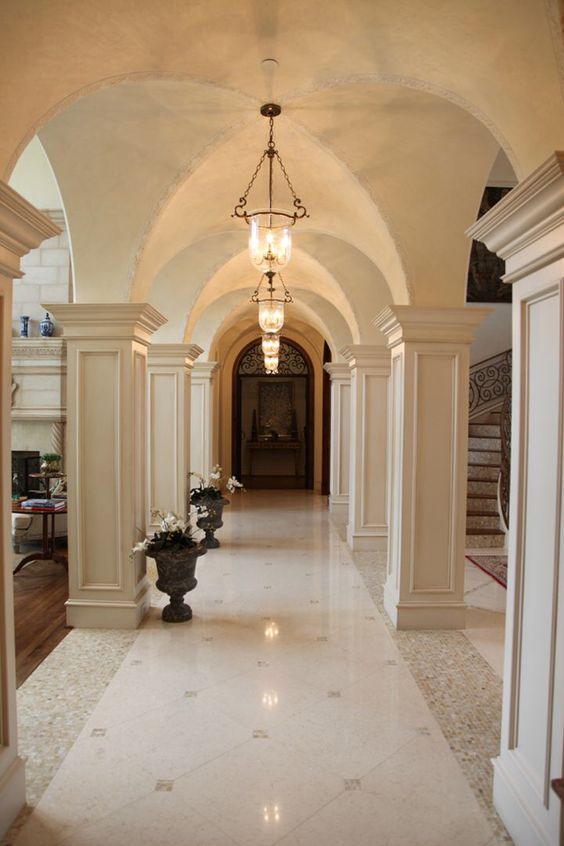The architectural marvel known as the groin ceiling has captivated builders and architects for centuries. This unique structure, which is formed by the intersection of two barrel vaults, creates a visually stunning effect that enhances both the aesthetic appeal and structural integrity of a space. With its rich history and intricate design, the groin ceiling is a testament to the ingenuity of architectural innovation. As we delve deeper into the world of groin ceilings, we will uncover their significance, design principles, and applications in modern architecture.
Throughout history, groin ceilings have been utilized in some of the most iconic buildings worldwide. From ancient Roman temples to modern art museums, these ceilings have played a pivotal role in defining the character of a space. The interplay of light and shadow created by the groin ceiling's curvature adds depth and dimension to interiors, making it a favored choice among architects looking to create a lasting impression. Furthermore, the structural benefits of groin ceilings cannot be overlooked, as they distribute weight evenly and allow for larger, open areas without the need for numerous supporting columns.
In this article, we will explore various aspects of groin ceilings, including their historical significance, design considerations, and modern interpretations. Whether you are an architecture enthusiast, a student, or a professional in the field, understanding the intricacies of groin ceilings will enhance your appreciation for this remarkable architectural feature.
What is a Groin Ceiling?
A groin ceiling is formed by the intersection of two barrel vaults, creating a ribbed structure that enhances both the aesthetic and functional qualities of a space. This architectural technique dates back to ancient civilizations and has evolved over time to suit various styles and applications.
How Did Groin Ceilings Evolve Over Time?
The groin ceiling has its roots in ancient Roman architecture, where it was used to create grand and spacious interiors. As architectural styles progressed, the groin ceiling adapted to various cultural influences, leading to unique interpretations across different regions. The Renaissance period, for instance, saw a resurgence of interest in classical architecture, resulting in more elaborate and decorative groin ceilings.
What are the Structural Benefits of Groin Ceilings?
Groin ceilings offer several structural advantages that make them a popular choice in construction:
- Weight Distribution: The curvature of the groin ceiling helps evenly distribute weight, reducing stress on supporting walls and columns.
- Open Spaces: The design allows for larger, open areas without the need for multiple support structures.
- Increased Durability: The ribbed structure is less prone to cracking compared to flat ceilings, ensuring longevity.
What Materials are Commonly Used in Groin Ceilings?
Groin ceilings can be constructed using a variety of materials, depending on the desired aesthetic and structural requirements. Common materials include:
- Brick: A classic choice for traditional groin ceilings, providing strength and durability.
- Concrete: Often used in modern designs for its versatility and ease of construction.
- Wood: Adds warmth and character to interior spaces, especially in residential applications.
Where Can Groin Ceilings Be Found Today?
Today, groin ceilings can be seen in a range of architectural settings, from grand cathedrals to contemporary art galleries. Some notable examples include:
- The Pantheon in Rome: An iconic representation of ancient Roman architecture featuring a stunning groin ceiling.
- The Basilica of Saint Peter in Vatican City: A magnificent example of Renaissance architecture with elaborate groin vaulting.
- The Getty Center in Los Angeles: A modern art museum that incorporates groin ceilings into its innovative design.
What Role Do Groin Ceilings Play in Interior Design?
In interior design, groin ceilings serve as a focal point that draws the eye upward, enhancing the overall spatial experience. They can be used to create a sense of grandeur in larger spaces or to add visual interest in smaller rooms. Designers often play with lighting and color to accentuate the curves and lines of a groin ceiling, creating a dynamic atmosphere that changes throughout the day.
Can Groin Ceilings Be Integrated into Modern Architecture?
Absolutely! Contemporary architects are increasingly incorporating groin ceilings into their designs, often blending traditional elements with modern aesthetics. This fusion creates unique and inviting spaces that pay homage to historical architectural techniques while embracing innovation.
Conclusion: The Timeless Appeal of Groin Ceilings
In conclusion, the groin ceiling is more than just an architectural feature; it is a symbol of creativity and craftsmanship that has stood the test of time. With its rich history, structural benefits, and aesthetic appeal, the groin ceiling continues to inspire architects and designers alike. Whether in a historic building or a modern masterpiece, groin ceilings remain a captivating element that enhances the beauty and functionality of any space.




